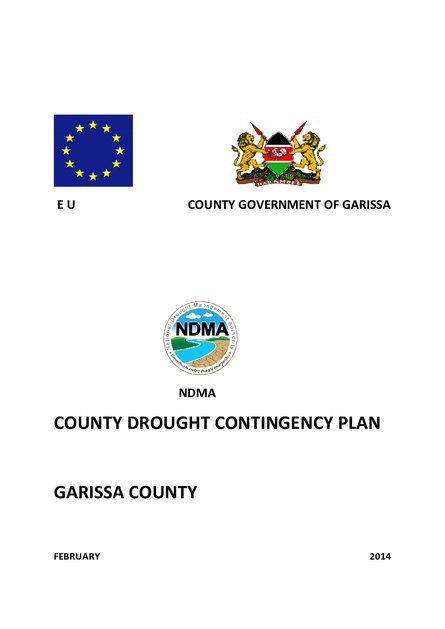
The arid and semi-arid lands (ASALs) of Kenya make up more than 80 per cent of the country’s land mass, and are home to more than 30 per cent of the population and nearly half its livestock. Nomadic pastoralism, the predominant livelihood in the ASALs, is the only form of productive land use through periods of poor and erratic rains; indeed, it may be difficult to conceive another livelihood more suited to this environment despite instance where alternative/complementary livelihood are often mentioned.
Drought is a common phenomenon in Kenya, particularly in the Asal counties .its occurrence increases with the increased variability caused by climate change. Given its slow onset, drought can be predicted, managed and should never turn into famine, hence the need to develop this comprehensive drought contingency plan for Garissa county., The development of this strategic and sustainable responses in this plan involved participation of various stakeholders including representative from all the sub-counties .the plan has six sections namely livestock,agriculture,education water ,conflict and health/nutrition .the county stakeholders have developed this county drought contingency plan to assist individuals and organizations through a process of identifying specific actions in each drought phase that can be taken to reduce drought risks.
The first chapter of this Drought contingency Plan provides general overview of the county. Chapter two to seven discusses each sector in details per livelihood zone. For each sector, the following key areas are systematically covered: an overview of the sector, drought scenario, drought indicators, intervention plans and finally intervention budgets for each drought stage. The document also highlights standard operating procedures (SOP) in the face of a drought event as contained in NDMA’s response manual.